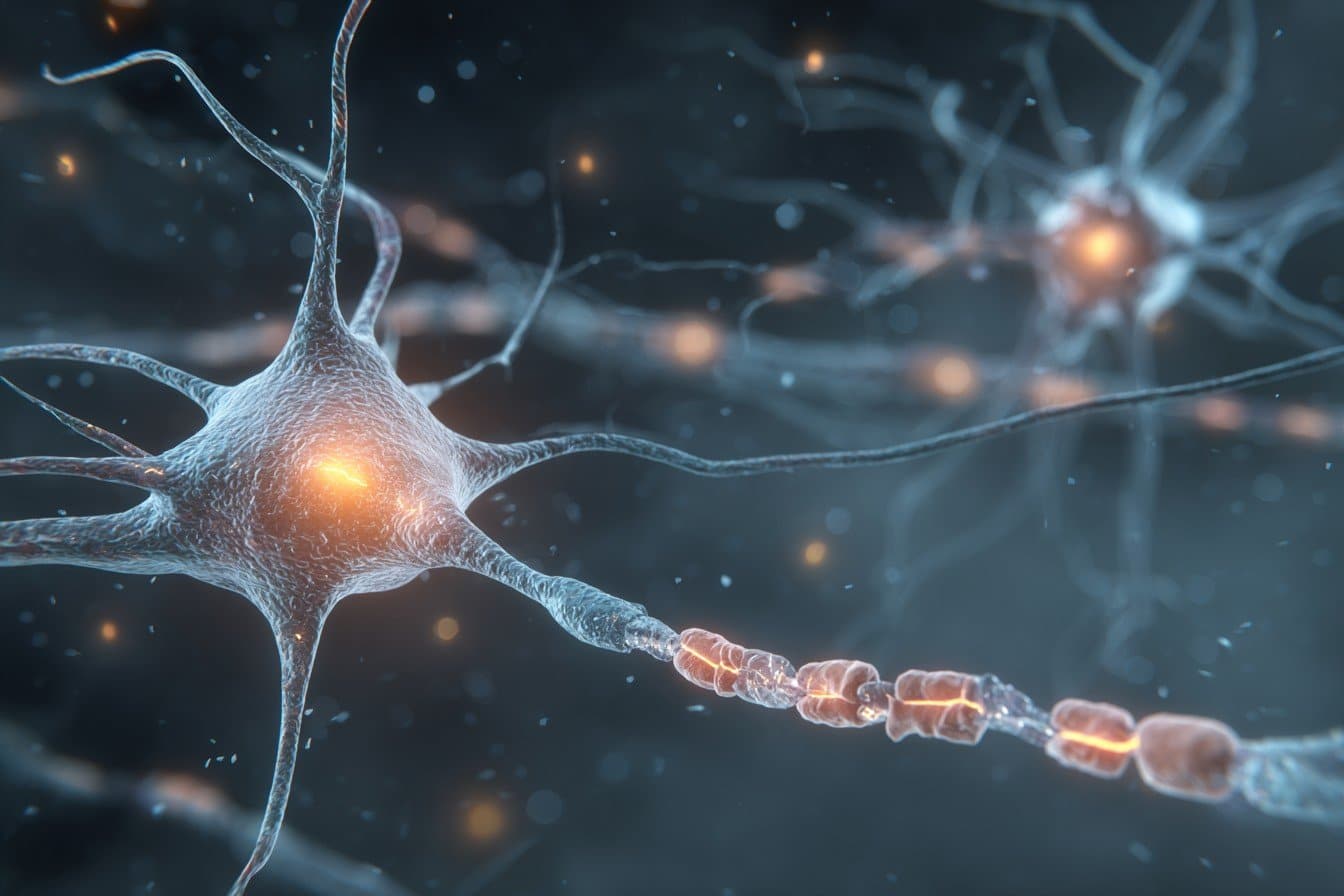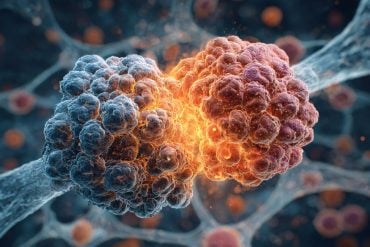Summary: A new study has uncovered why some motor neurons resist degeneration in ALS while others succumb. Researchers found that neurons controlling eye muscles maintain high levels of protective genes like En1 and Galanin, shielding them from damage.
In contrast, sensitive neurons attempt self-defense by activating both protective and regenerative pathways, but these fail as the disease progresses. Using AI, the team also pinpointed VGF, INA, and PENK as potential biomarkers for ALS, offering hope for earlier diagnosis and new therapeutic targets.
Key Facts
- Protective Genes: Resistant neurons maintain high levels of En1, Pvalb, Cd63, and Galanin.
- Dual Response: Sensitive neurons activate protective and regenerative genes but still degenerate.
- AI Biomarkers: Machine learning identified VGF, INA, and PENK as ALS diagnostic markers.
Source: Stockholm University
By analyzing millions of messenger RNA molecules (mRNA) during the course of ALS, researchers at Stockholm University, in collaboration with scientists at the Paris Brain Institute and Örebro University, have identified why certain nerve cells are resistant to the disease and what happens in the sensitive nerve cells when they are affected.
The study, published in the scientific journal Genome Research, focuses on a hereditary form of ALS caused by mutations in the SOD1 gene.

“We have gained a better understanding of how nerve cells can be protected against ALS. This opens up new targets for future therapies,” says Eva Hedlund, professor of neurochemistry at Stockholm University and head of the study.
The fatal disease amyotrophic lateral sclerosis (ALS) occurs when specific nerve cells, known as motor neurons, die and their connections – synapses – with skeletal muscles break down. However, a few groups of motor neurons are resistant to the disease, including those that control the muscles of the eye.
The study shows that resistant motor neurons do not react significantly to the disease when it is caused by a hereditary SOD1 mutation, probably because they have very high basal levels of several nerve-protecting factors, such as Engrailed-1 (En1), Parvalbumin (Pvalb), Cd63, and Galanin (Gal). En1 is a transcription factor, a kind of “switch” for genes, which controls which proteins are produced in the cell.
“From previous research, we know that it can protect sensitive neurons from breaking down,” says one of the co-authors, Dr Melanie Leboeuf. “But the fact that the protective factor is produced at such high levels in the resistant motor neurons that control eye movements was a surprise.”
The research team was also able to show that sensitive motor neurons activate both harmful and protective responses to ALS.
“The nerve cells show clear signs of trying to protect themselves and activate genes that are normally high in the resistant nerve cells, such as En1, Pvalb, Cd63, and Gal. They also try to reestablish lost contact with the muscles by activating regeneration-promoting genes such as Atf3 and Sprr1a, even though these attempts ultimately fail,” says Eva Hedlund.
The discovery of distinct basal and induced gene activity in different nerve cells opens up new possibilities for treatment.
“By trying to stimulate the cells to suppress the bad responses and instead further stimulate those that are important for survival, there is a chance that we may see positive results in the future,” says Eva Hedlund.
To understand which gene responses from the sensitive motor neurons that can best be used to predict the disease, the research team used machine learning, a branch of AI. This enabled the team to identify the genes VGF, INA, and PENK as strong indicators of disease across different mutations and that these genes could be used to identify ALS in human samples.
“We see a possibility that these genes could eventually be used as biomarkers for the disease and help with diagnosis and prognosis,” says Irene Mei, PhD student at the Department of Biomedical Sciences and Biophysics at Stockholm University and first author of the study.
About this ALS and genetics research news
Author: Lina Enell
Source: Stockholm University
Contact: Lina Enell – Stockholm University
Image: The image is credited to Neuroscience News
Original Research: Open access.
“Transcriptional modulation unique to vulnerable motor neurons predicts ALS across species and SOD1 mutations” by Eva Hedlund et al. Genome Research
Abstract
Transcriptional modulation unique to vulnerable motor neurons predicts ALS across species and SOD1 mutations
Amyotrophic lateral sclerosis (ALS) is characterized by the progressive loss of motor neurons (MNs) that innervate skeletal muscles. However, certain MN groups including ocular MNs, are relatively resilient.
To reveal key drivers of resilience versus vulnerability in ALS, we investigate the transcriptional dynamics of four distinct MN populations in SOD1G93A ALS mice using LCM-seq and single-molecule fluorescent in situ hybridization.
We find that resilient ocular MNs regulate few genes in response to disease. Instead, they exhibit high baseline gene expression of neuroprotective factors, including En1, Pvalb, Cd63, and Gal, some of which vulnerable MNs upregulate during disease.
Vulnerable MN groups upregulate both detrimental and regenerative responses to ALS and share pathway activation, indicating that breakdown occurs through similar mechanisms across vulnerable neurons, albeit with distinct timing.
Meta-analysis across four rodent mutant Sod1 MN transcriptome data sets identify a shared vulnerability code of 39 genes, including Atf4, Nupr1, Ddit3, and Penk, involved in apoptosis, as well as a proregenerative and antiapoptotic signature consisting of Atf3, Vgf, Ina, Sprr1a, Fgf21, Gap43, Adcyap1, and Mt1.
Machine learning using genes upregulated in SOD1G93A spinal MN predicts disease in human stem cell–derived SOD1E100G MNs and shows that dysregulation of VGF, INA, and PENK is a strong disease predictor across species and SOD1 mutations.
Our study reveals MN population-specific gene expression and temporal disease-induced regulation that together provide a basis to explain ALS selective vulnerability and resilience and that can be used to predict disease.






